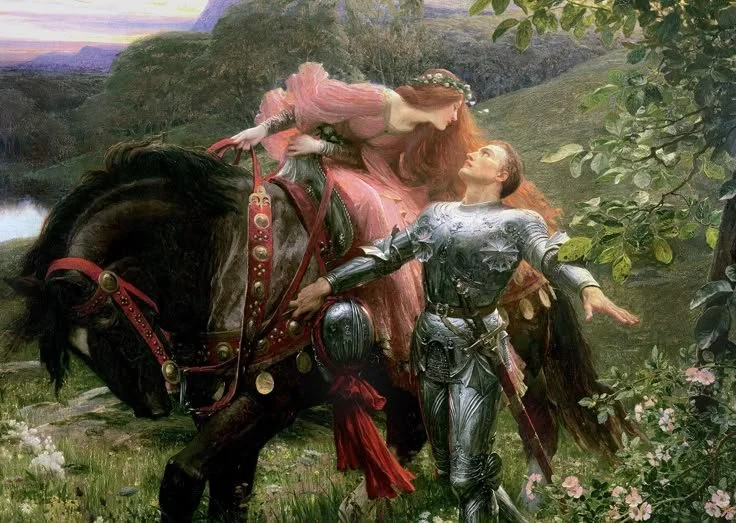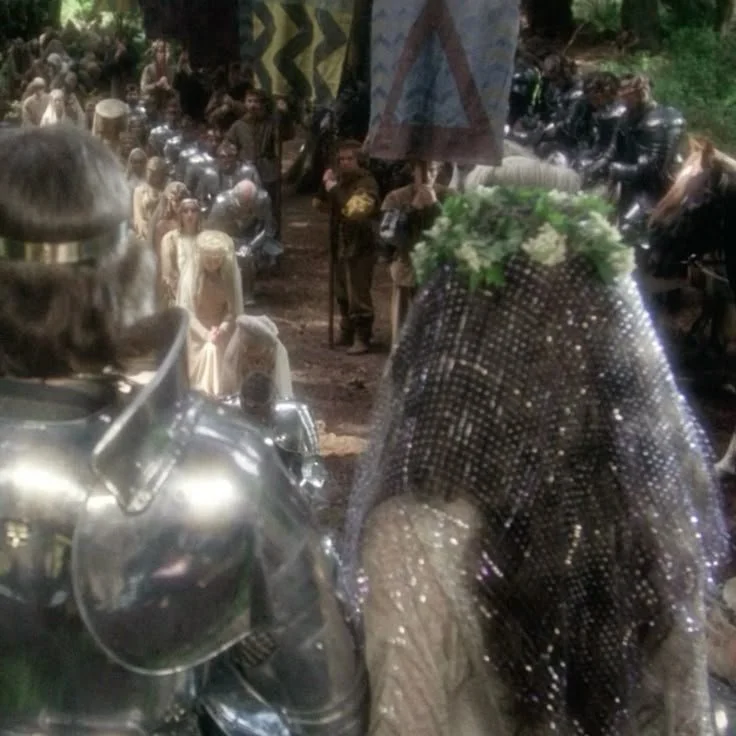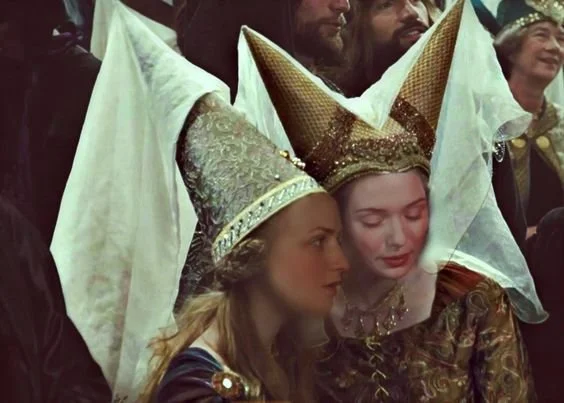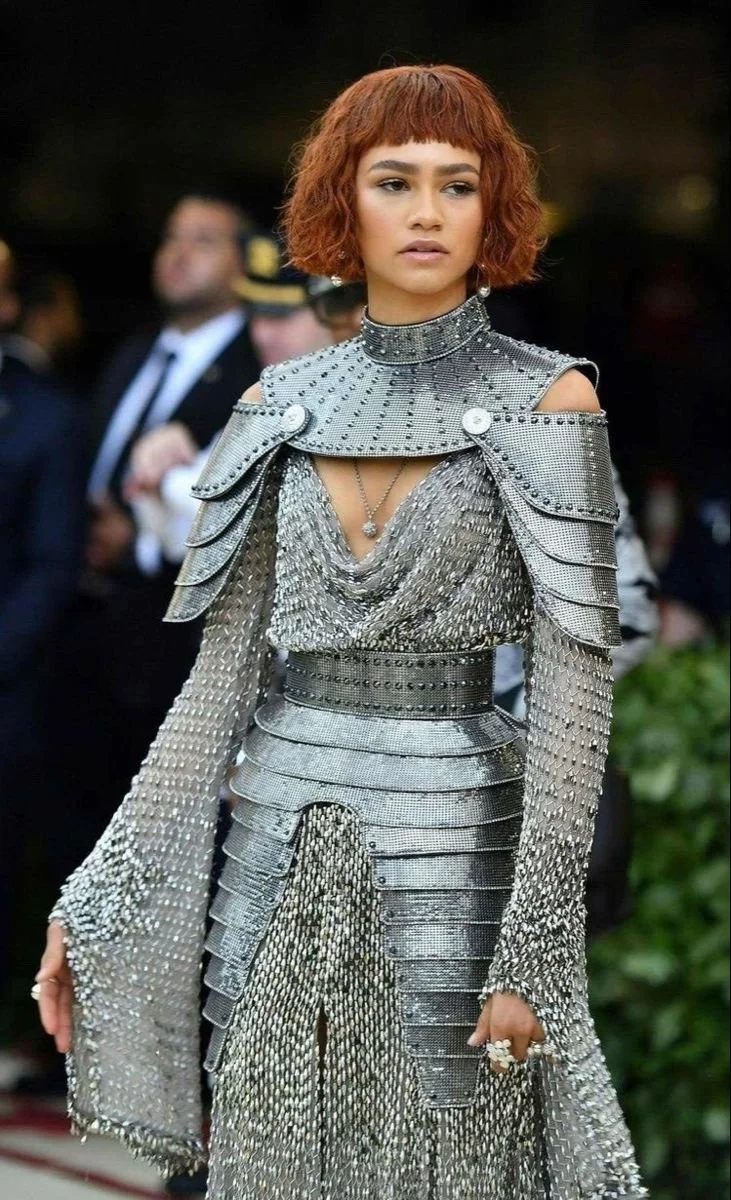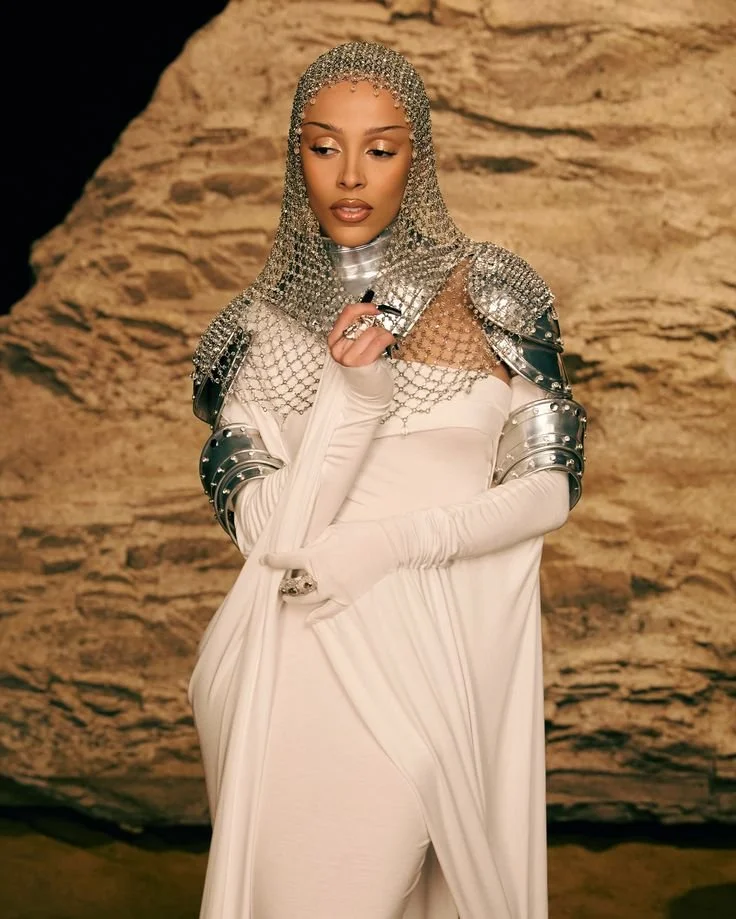THE GOLDEN AGE THINKING: ARE WE ESCAPING THE PRESENT THROUGH "MEDIEVAL Y2K”?
words by NATALIE GAL
edited by MAREK BARTEK
If you’re asking what chain mail tops, low-rise skirts, and corseted silhouettes might have in common, allow me to introduce you to Medieval Y2K. A trend gaining more and more attention in the media, mixing fantasy and futurism with nostalgia. Though at first glance, it might look like a mashup of a Renaissance fair and a long-lost MySpace profile, underneath lies something deeper: a generational longing for escape.
Medieval Y2K blends two eras we’ve romanticized, the mythic medieval ages and (what once was) the hopeful dawn of the internet. We live in a time when the “clean girl” aesthetic promotes control and effortless perfection. But instead, there seems to be a growing need for chaos. Layered and free.
You may wonder, why is it trending now?
We like to think we are different from medieval people, and rightfully so. How could we possibly be the same society? We are cultural, evolved, living in an era of individualism and supposed freedom. But we might need to reconsider this standpoint. Power struggles, inequality or class dissatisfaction–medieval and modern lives share more parallels than we tend to notice at first glance.
In the digital age, we still simply mimic old power structures in new forms. Tyrannical monarchies have been replaced by exploitative global corporations, and church-like institutions now take the form of algorithmic platforms that shape our beliefs, and even our identities. The almighty rulers and kings? They never really left.
In the face of climate anxiety, digital surveillance, and economic crises, many are turning not to the future, but to imagined versions of the past. We romanticize the past in the same way medieval societies once did the future. In Victorian times, we could see countless works of art speculating on what was to come, visions of progress and invention; but today, that forward-looking curiosity has all but vanished.
all images via pinterest.com
Our growing obsession with the past reflects a deepening dissatisfaction with the present. And while it may seem cliché to quote a movie, I can’t help but recall a line from Midnight in Paris: “Nostalgia is denial. Denial of the painful present. The name for this denial is Golden Age thinking, the erroneous notion that a different time period is better than the one one’s living in. It’s a flaw in the romantic imagination of those people who find it difficult to cope with the present.”
This is not the first time we’ve romanticized the past in such a way. The aesthetics of the 1970s saw an immense medieval revival. Memorable outfits worn by Stevie Nicks, the rise of the folk-rock music scene, the reprints of The Lord of the Rings, and even the popularity of Dungeons & Dragons. The 1980s continued this revival, but made it campier, with exaggerated silhouettes. Think: David Bowie’s iconic look in Labyrinth. The stage has been well-set for Y2K’s romantic take: less dramatic than the 80s, but dreamier than the 70s’ earth-toned medieval fashion.
Gen Z's embrace of Y2K style is deeply intertwined with their childhood, shaped by Disney’s version of the medieval: princesses, enchanted castles, and neatly shrink-wrapped fairytales. Medieval Y2K taps into that subconscious yearning for magic and wonder, rooted in the stories that raised us.
The fashion of Medieval Y2K
Fashion-wise, Medieval Y2K is defined by corsets, chain mail, long skirts, and rich, layered textures, while the metallics and sheer fabrics bring a distinctly Y2K twist to otherwise medieval silhouettes.
Numerous artists have embraced the look in their recent appearances, pushing it into the mainstream, but perhaps no one has done so more visibly than Chappell Roan, and her many iconic looks, like the Rabanne outfit at the MTV VMAs and the iconic red look on the Good Luck, Babe! album cover.
Doja Cat also often gravitates toward medieval silhouettes, though always with her signature twist. Grimes offers a more sci-fi, futuristic interpretation of the trend, while Taylor Swift leans into romantic fantasy, most notably in the Bejeweled video. And, of course, who could forget Zendaya’s 2018 Met Gala look? Even Addison Rae and Lorde have subtly adapted this aesthetic into their well-established style identities.
Medieval Y2K is all about getting creative, thrifting, and DIY, but plenty of brands are shaping it, too. Chopova Lowena’s bold skirts, KNWLS’s corsets, or the edgy styles from Diesel and Acne Studios (especially Fall 2023) are just a few of honorary mentions. If you're looking for inspiration, don’t rush to fast fashion for quick gratification. Instead, explore fashion archives: collections like Christian Lacroix Spring 1994, Betsey Johnson Fall 1997, or John Galliano Spring 1993 all nailed this aesthetic. It’s time to get creative and medievally crafty!
all images via pinterest.com


